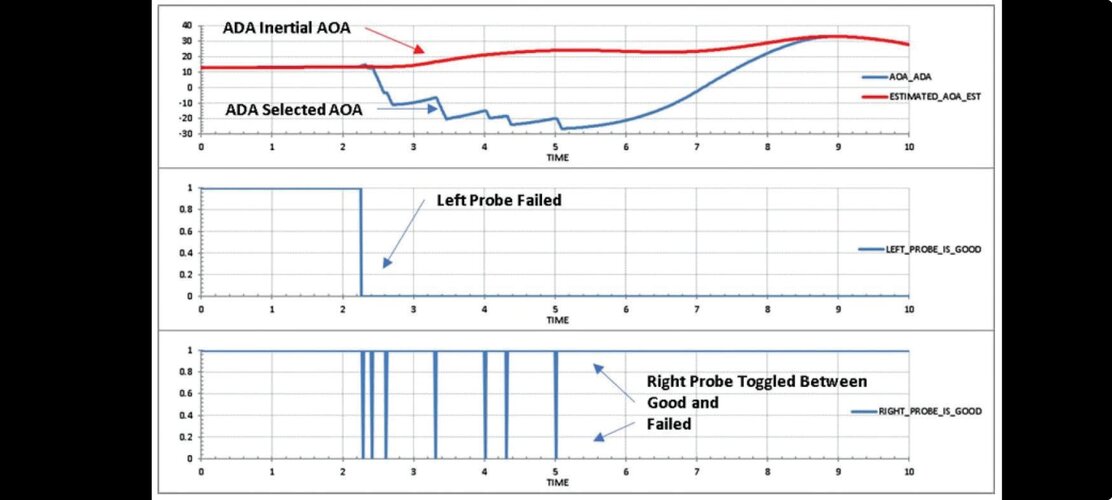The second disturbance was encountered between 18:08:27L and 18:08:30L as the MA maneuvered to land (Tabs J-1.8 and V-1.1.5). This disturbance resulted in a large enough disruption of airflow over the sensors that the ADA, based on system parameters, excluded data from the left side MFP (Tabs J-1.8 and V-1.1.5). Excluding data from the left side MFP resulted in a visual and audio AIR DATA DEGD (degrade) integrated caution advisory or warning (ICAW) to the MP at 18:08:29L (Tabs J-1.8 and V-1.1.5).
As captured by the CSMU, the disturbed air also caused the right-side probe to show readings outside input limits (Tab J-1.29). These readings did not trigger any ICAWs (Tab J-1.29). This intermittent disruption to the right side occurred multiple times over the next three seconds (18:08:27L to 18:08:30L) (Tab J-1.29). During each of these intermittent disruptions to the right side, with the left side inputs still excluded, the ADA stopped using primary readings until the right probe’s readings came back to within acceptable parameters (Tabs J-1.29 and V-2.1.5). Each time the right probe was intermittently excluded, the ADA switched between primary and back up sources to determine flight conditions (Tabs J-1.29 and V-2.1.5). With each transition, a value referred to as a “sump,” was added to the on-board model to smooth flight control movements while switching between primary and backup (Tabs J-1.29 and V-2.1.7). “Sump” values nominally decay over four seconds, assuming there is a single transition between sources (Tab J-1.30). During the right probe’s multiple, short-duration, readings outside of input limits, the ADA switched between primary and backup sources multiple times without time for the sump value to decay (Tab J-1.30). Each time this transition occurred the sump values added together (Tab J-1.30). The sum of the sump values from the multiple transitions resulted in the on-board model’s estimation of aircraft conditions, differing from the aircraft’s actual conditions to the point the MP was no longer able to control the MA (Tabs J-1.30 and CC-1.2). Based on CSMU data, the aircraft was not correctly responding to pilot inputs in the final seconds prior to ejection and departed controlled flight at 18:08:34 (Tab CC-1.2). This data is evidenced in the angle of sideslip (AOSS) values at 18:08:34 and after, approximately 2 seconds prior to MP ejection at 18:08:36L (Tabs J-1.15, J-1.22, and CC-1.2).

















